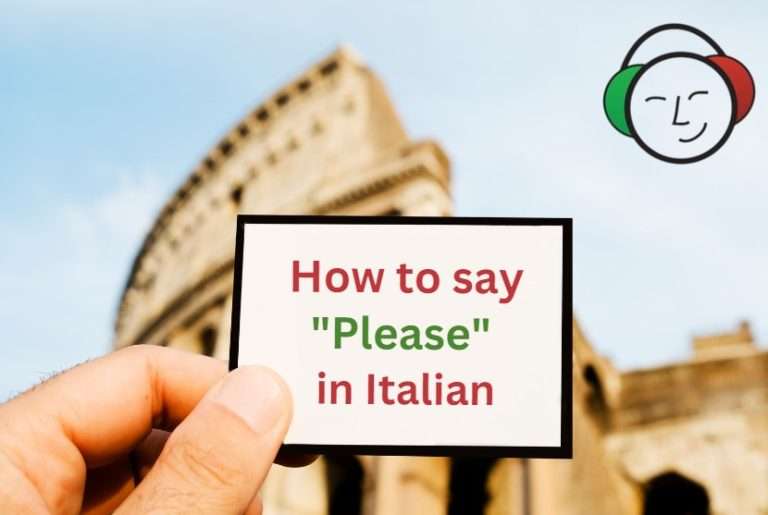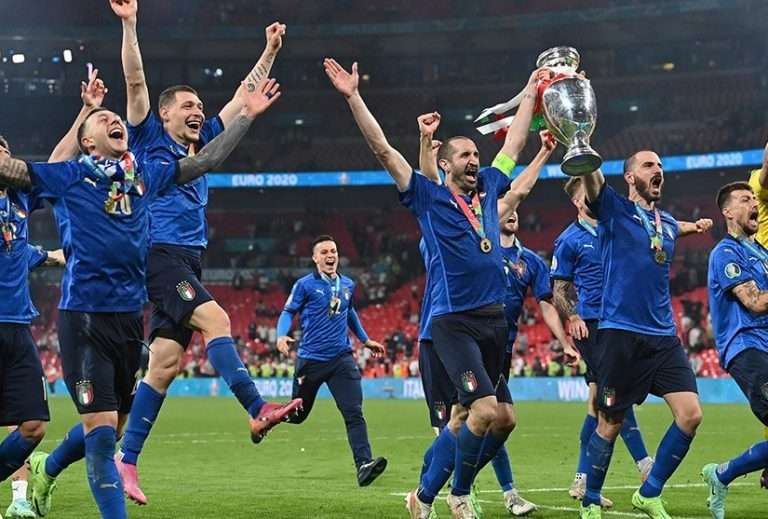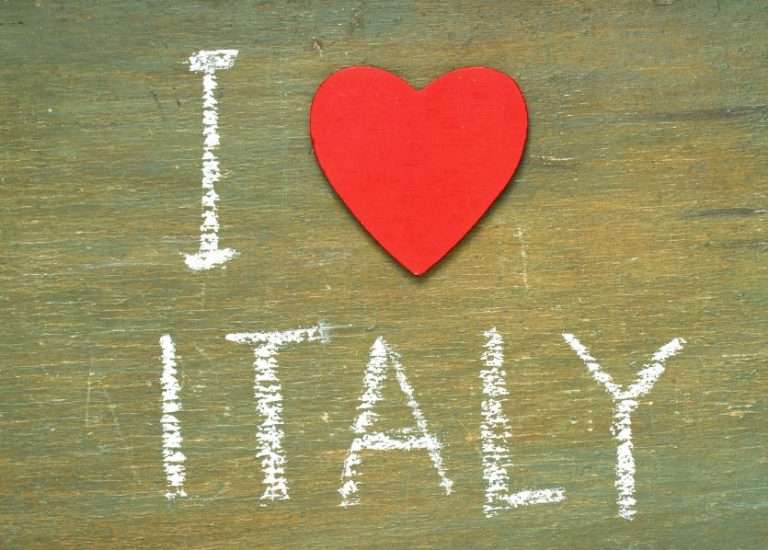How to Say Good Morning in Italian: Greetings Guide
Ciao, dear readers! If you’ve ever wondered how to say good morning in Italian, you’ve landed in the right place. In this article, we’ll unearth the distinctions between different ways to say good morning in Italian, acquaint ourselves with widely-used idioms, and immerse ourselves in the cultural nuances of the iconic Italian word “buongiorno.”
To aid you in your learning journey, we will supply examples in both Italian and English, complemented by audio resources to hone your pronunciation skills.
Grasping how to articulate good morning in Italian is crucial, considering greetings are among the phrases you’ll repeatedly use while navigating Italy or interacting with a native speaker.
Most Common Ways to Say Good Morning in Italian
Let’s start with the essentials. The most common way to say good morning in Italian is by exclaiming, “Buongiorno!” This word merges “buon” (good) and “giorno” (day) and fits seamlessly into both casual and formal settings. Responding with “Buongiorno” is also the best way to answer when someone greets you with a good morning in Italian.
Next, let’s delve into the plethora of ways to articulate good morning in Italian:
| Italian | Pronunciation | English |
|---|---|---|
| buongiorno | bwohn-johr-no | good morning, good day |
| buona giornata | bwoh-nah johr-na-tah | good morning, good day |
| buona mattinata | bwoh-nah mat-tee-nah-tah | good morning |
| buon mattino | bwohn mat-tee-no | good morning |
| buon dì (buondì) | bwohn dee (bwon-dee) | good morning, good day |
| giorno | johr-no | good morning, day |
| ngiorno | n-johr-no | good morning, day |
Let’s go over these phrases one by one:
1. Buongiorno

Buongiorno (literally: good day) is the most common Italian greeting, the standard way to greet someone in the morning in Italian. An important detail to remember is that “Buongiorno” is a single word in Italian and should not be separated into two words like “buon giorno.” Buongiorno is used in both formal and informal situations.
Furthermore, in formal or semi-formal settings, including business contexts, “buongiorno” is frequently used as a polite introduction. For example, when meeting someone professionally for the first time, you might say: “Buongiorno, mi chiamo Luigi,” which translates to “Good morning, my name is Luigi.”
Suggested Reading: 27 Best Italian Breakfast Foods & Drinks to Try
2. Buona giornata
While similar to buongiorno, this phrase (literally: good day) is typically used when you wish someone a good day as you’re parting ways. For example, “Buona giornata, Roberto!” which means “Have a good day, Roberto!”
3. Buona mattinata
This phrase (literally: good morning) is less common than buongiorno and is the literal translation of good morning. An example could be “Buona mattinata, amico mio!” meaning “Good morning, my friend!”
4. Buon mattino
Buon mattino (good morning) is similar to buona mattinata and less common than buongiorno. It is often used to refer to the morning in the past. You could say, “Spero che to abbia passato un buon mattino, Paolo.” which translates to, “I hope you had a good morning, Paolo.”
5. Buon dì (Buondì)
This is an older way to say good morning in Italian; you might not often hear it. It’s often used in informal contexts. For example, “Buon dì, signor Rossi!” means “Good day, Mr. Rossi!”
6. ‘Giorno
This is a shortened form of buongiorno and is a very informal Italian greeting. You can use it with close friends, like in the phrase “‘Giorno, Luca!” meaning “Day, Luca!”
7. ‘Ngiorno
This is another variation of the shortened buongiorno and is also very informal. Use it casually with friends, as in the phrase “‘Ngiorno, Antonio!” translating to “Day, Antonio!”
Recommended Reading: How to Say Hello in Italian: 21 Ways to Greet in Italy Like a Local
Tailoring Your Morning Greetings: Addressing Italians Based on Title, Gender, and Situation

When communicating in Italian, it is important to be aware of variations in language based on context, such as the person’s title, gender, and social situation. Like in English, Italian expressions can change depending on whether you are talking to a group, an individual, or formally addressing someone.
These variations showcase the richness and flexibility of the Italian language, allowing for nuanced conversations that show respect, intimacy, or camaraderie as needed.
When addressing Italians based on their title, gender, or in a group, you can use the following phrases:
| Italian | English |
|---|---|
| buongiorno, signore | good morning, sir |
| buongiorno, signora | good morning, madam |
| buongiorno a tutti | good morning, everyone |
| buongiorno a te | good morning to you |
| buongiorno a voi | good morning to you (plural) |
| buongiorno, come va? | good morning, how’s it going? |
| buongiorno, come stai? | good morning, how are you? (informal) |
| buongiorno, come sta? | good morning, how are you? (formal) |
| buongiorno, come state? | good morning, how are you? (plural) |
| buongiorno, piacere di conoscerti | good morning, nice to meet you (informal) |
| buongiorno, piacere di conoscerla | good morning, nice to meet you (formal) |
| buongiorno, piacere di conoscervi | good morning, nice to meet you (plural) |
Say Good Morning in Italian: Specific Salutations
As we mentioned earlier, Italians use specific salutations when addressing someone based on their title or social standing.
1. Buongiorno, signore
Translation: Good morning, sir. – This formal greeting is typically used when addressing a man in a formal setting or when you do not know the person well. It shows respect and is a very common salutation.
2. Buongiorno, signora
Translation: Good morning, madam – This is the female counterpart to the above greeting. It is used when addressing a woman in a formal setting or one whom you do not know well.
3. Buongiorno a tutti
Translation: Good morning to all – This phrase is ideal when entering a room full of people or starting a meeting or gathering. It is a general greeting that is both friendly and respectful.
4. Buongiorno a te
Translation: Good morning to you – This phrase is more personal and indicates a closer relationship with the person you are speaking to. It is used in casual or more intimate settings.
5. Buongiorno a voi
Translation: Good morning to you (plural) – This is used when addressing multiple people in a more intimate or casual setting. It’s like the plural version of “Buongiorno a te”.
6. Buongiorno, come va?
Translation: Good morning, how’s it going? – This phrase is a friendly and informal way to follow a greeting with a question about how the person is doing. It is suitable for casual conversations.
Suggested Reading: Searching for the best app to learn Italian can feel overwhelming. Read our guide for guidance on top-rated language apps tailored to various learning styles and needs.
7. Buongiorno, come stai?
Translation: Good morning, how are you? (informal) – This is another casual, informal way to ask about someone’s well-being, used when speaking to one individual.
8. Buongiorno, come sta?
Translation: Good morning, how are you? (formal) – This is the formal version of the previous phrase. It is more respectful and typically used in professional or formal contexts.
9. Buongiorno, come state?
Translation: Good morning, how are you? (plural) – This is the plural version of “Buongiorno, come stai?” and “Buongiorno, come sta?” used when addressing a group of people.
10. Buongiorno, piacere di conoscerti
Translation: Good morning, nice to meet you (informal) – This phrase expresses your pleasure at meeting someone for the first time in an informal setting.
11. Buongiorno, piacere di conoscerla
Translation: Good morning, nice to meet you (formal) – This is the formal version of the previous phrase, used in more formal or respectful contexts.
12. Buongiorno, piacere di conoscervi
Translation: Good morning, nice to meet you (plural) – This phrase is used when meeting a group of people for the first time.
These variations of greetings not only embody the rich expressiveness of the Italian language but also underscore the importance of social propriety in Italian culture. By mastering these expressions, you will be able to navigate various social situations with ease and authenticity.
Morning Affection: Romantic Italian Greetings for Loved Ones

The Italians do it with flair when it comes to saying good morning to their beloved. Here are some tender and romantic ways to say good morning:
- Buongiorno, tesoro mio: Good morning, my treasure
- Buongiorno, amore mio: Good morning, my love
- Buongiorno, bella mia: Good morning, my beauty
Recommended Reading: Italian Men: 20 Things to Know When Dating in Italy
1. Buongiorno, tesoro mio
This expression translates to “Good morning, my treasure.” It’s a term of endearment that compares your loved one to a treasure, expressing their worth and value to you.
2. Buongiorno, amore mio
This phrase means “Good morning, my love.” This phrase is commonly used between partners and speaks volumes about your profound affection for them.
3. Buongiorno, bella mia
Buongiorno bella mia is translated as “Good morning, my beauty.” This greeting is typically used towards women and is a romantic way to compliment your partner upon waking up, reaffirming their beauty in your eyes.
The Italian language is truly expressive, and these phrases reflect the depth of emotion and passion inherent in the culture.
Informal Ways to Say Good Morning Among Italians
In relaxed, familiar settings where formality is less concerned, Italians often use more colloquial greetings to say “good morning.”
- Sveglia: Wake up
- Svegliati: Wake up (informal)
“Sveglia” and “Svegliati” are both popular terms used to essentially say, “Wake up.” While the informal greeting “Sveglia” is a neutral term that could be used in different contexts, “Svegliati” is slightly more personal and informal. It’s a bit like telling someone to “rise and shine.”
These expressions are typically used in informal settings, among friends, family members, or people of the same age group, highlighting Italian social interactions’ warm and close-knit nature.
Morning Proverbs: Diving into Cultural Insights from Italian Sayings

A deep dive into Italian culture would be incomplete without exploring some of the popular Italian sayings related to mornings:
Chi dorme non piglia pesci
“Chi dorme non piglia pesci” translates to “He who sleeps doesn’t catch fish.” This is the Italian equivalent of the English proverb, “The early bird catches the worm.” It’s a reminder that diligence and early action often lead to success.
Il buongiorno si vede dal mattino
“Il buongiorno si vede dal mattino” is a proverb that translates to “The day is known by the morning,” which is similar to the English saying, “Morning shows the day.” This implies that the start of something often determines its end or that early indication can predict eventual outcomes.
Il mattino ha l’oro in bocca
“Il mattino ha l’oro in bocca” means “The morning has gold in its mouth.” This is another expression conveying a similar sentiment to “The early bird gets the worm.” It suggests that the morning hours are precious and can bring opportunities and rewards for those who take advantage of them.
Beyond Morning: Italian Greetings for Different Times of the Day
It’s worth mentioning that in Italy, the greeting “Buongiorno” is used not just in the early hours but can stretch until around noon or even as late as one o’clock in the afternoon in some regions. Transitioning from morning salutations, Italians possess distinct ways of extending greetings depending on the time of the day.
- “Buon pomeriggio” is the common phrase to wish someone a “Good afternoon.” It’s perfect to use from noon until the early evening.
- “Buona sera” translates to “Good evening” and is the typical greeting as the evening approaches.
- “Buona serata” is another way of saying “Have a good evening.” This is often used when you are leaving and want to wish someone an enjoyable rest of the evening.
- “Buona notte” is the phrase for “Good night,” usually used when parting ways at night or before going to bed.
Italian Farewells: Expressions to Conclude a Conversation

Lastly, when it’s time to say goodbye, Italians have a variety of expressions:
- “Ciao” is a versatile phrase that can mean both “Hello” and “Goodbye.” It’s informal and widely used among friends and acquaintances. Learn more: What Does Ciao Mean in Italian? Origins & Intriguing Facts
- “Ci vediamo” translates to “See you,” a casual and friendly way to say goodbye with the implication of meeting again soon.
- “Ti saluto” means “I greet you.” It’s a formal way to take your leave, particularly in written correspondence or formal settings.
- “Stammi bene” translates to “Be well.” It’s a warm way to wish someone well at the end of a conversation.
- “Alla prossima” means “Until next time,” conveying the hope of meeting or talking again in the future. It leaves on a positive note, reinforcing the anticipation of your next interaction.
In conclusion, starting the day with a warm “Buongiorno” is essential to Italian life. As you continue to study and immerse yourself in the beautiful Italian culture, remember that these simple phrases are more than words—they’re a doorway to deeper connections, unforgettable experiences, and the heart of Italy itself.
You’ve expanded your language skills and cultural understanding by learning how to say good morning in Italian and the various alternatives. You’re now ready to greet the day the Italian way!
Further Reading:
- How to Say Good Luck in Italian: 25 Sayings and Phrases







